Fritschi Introduces the Vipec Evo and Tecton AT Bindings
(Last Updated On: )
Let’s face it. Not a whole lot has changed with AT tech bindings over the last few years. But Fritschi has slowly been working to improve their existing lightweight Vipec binding. And for 2017-18 they will introduce their Tecton binding, a more burly touring binding which will directly compete with the Marker Kingpin.
Vipec Evo 12 Binding
The original Vipec binding was released for the 2013-14 season and I have skied on this binding ever since, on a different model of it with each season. Every year Fritschi has continued to improve their binding and I can say it continues to evolve nicely.
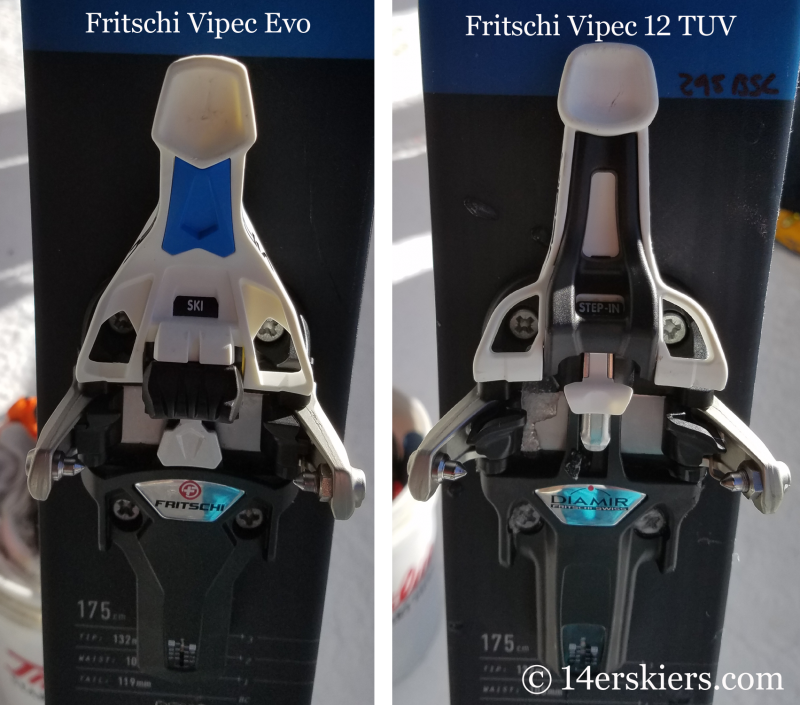
The new Vipec Evo binding is a continuation of this evolution. It still holds all the things about the original Vipec that I love which include: 1) a release value in both the toe and heel that is similar to a DIN setting 2) easy switch from skiing to touring and back 3) elasticity so the binding does not feel so rigid and 4) lightweight.
However, recent Vipec models have had two main complaints. The first is that snow would build up on the inside of the heel of the binding, making it difficult to make the binding lock into ski mode. I describe this problem in detail on this review from 2014. But, after skiing the “Black” Vipec model (called the Vipec 12 TUV) that came out last season, I experienced this problem very little, so this problem has seemed to improve. The 2017 Vipec Evo 12 will have this same heel piece.
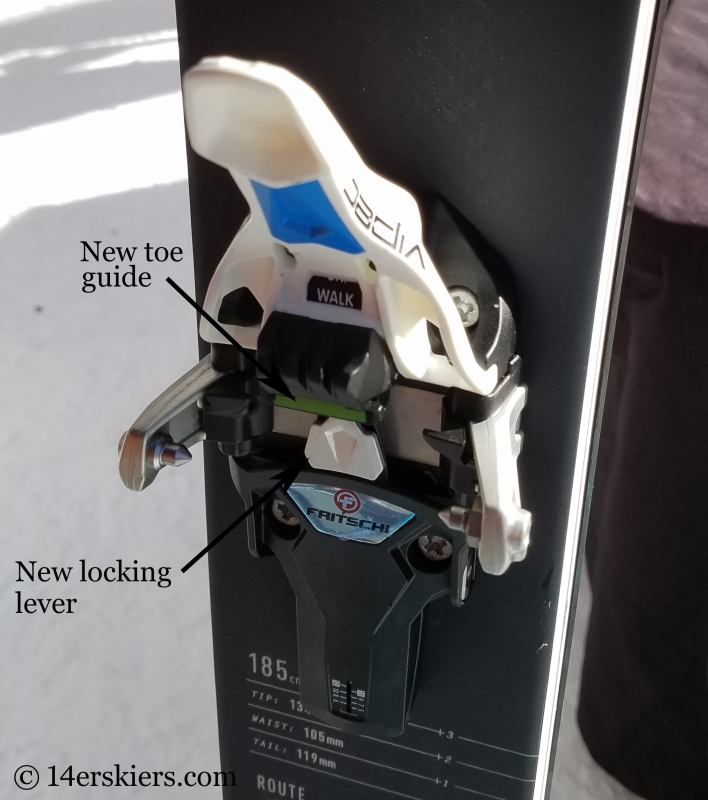
Of course, the Vipec Evo still holds all of the benefits of the original Vipec, some of which I mentioned above. It also still features:
- micro-ajustable wings to adjust the width of the toe
- a lateral release in the toe with 13mm of dynamic way – instead of being almost completely rigid
- gliding heel piece that allows for consistent contact pressure when the ski is flexed
- DIN release values between 5 and 12, both in heel and toe
- works with skis 67 mm and wider, brake options for 80 / 90 / 100 / 110 / 120 mm with
lateral release - ski-crampon compatible
Gram counters will care that the Evo is reported at 500 g per pair without brakes. Adding brakes increases the weight by about 80 grams. This is very comparable in weight to the current Vipec 12 TUV binding.
The MSRP for the Evo is $599.95.
Introducing the Fritschi Tecton Binding
The real meat of Frischi’s developments lies in the Tecton, a large step forward in the evolution of AT tech bindings. The Tecton uses the same toe piece as the Vipec Evo, and thus contains all the features mentioned above. But the heel piece is where the innovation lies, with a variation of an alpine heel piece intended to rival the Marker Kingpin.
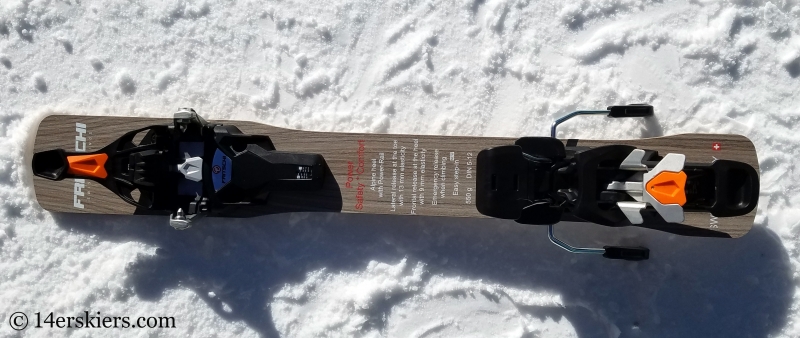
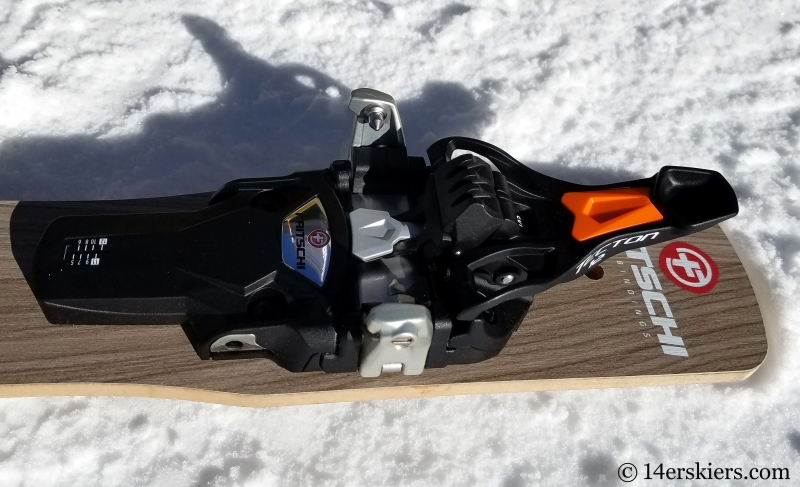
Kingpin fans take note – The Fritschi Tecton binding is 100 grams lighter. Fritschi is reporting the weight of the Tecton to be 550 grams per pair (80 grams more to add brakes), while The Kingpin is reported at 650 grams (730 g with brakes).
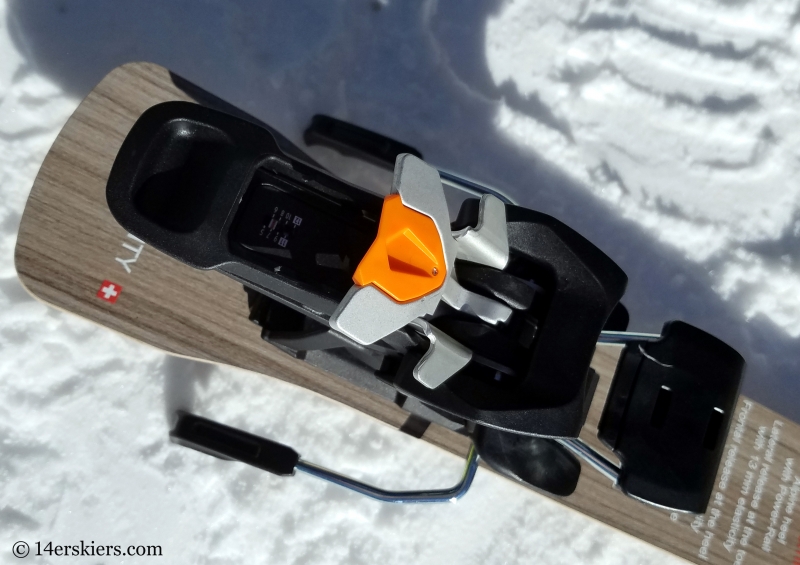
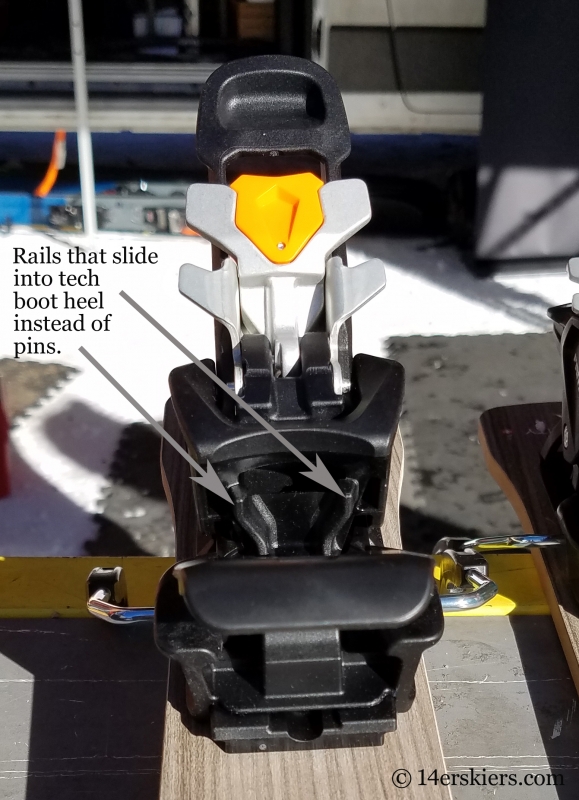
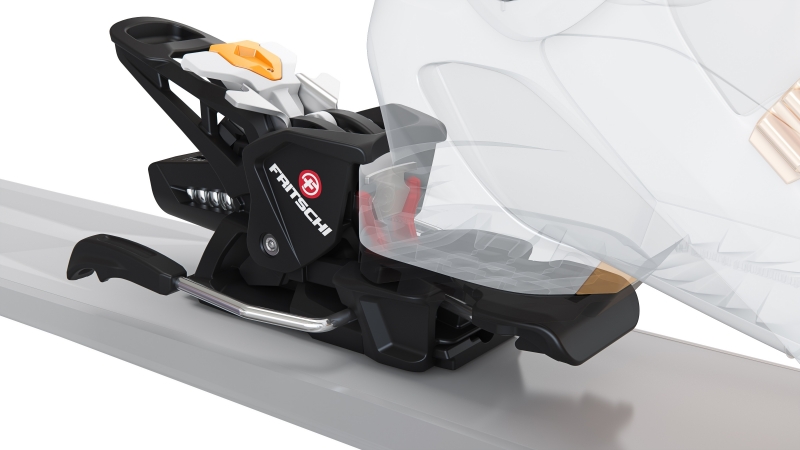
One benefit of an alpine style heel is that the binding will be more likely to release when you need it to, hopefully preventing potential injury. The Tecton has a frontal release system with 9 mm of dynamic way.
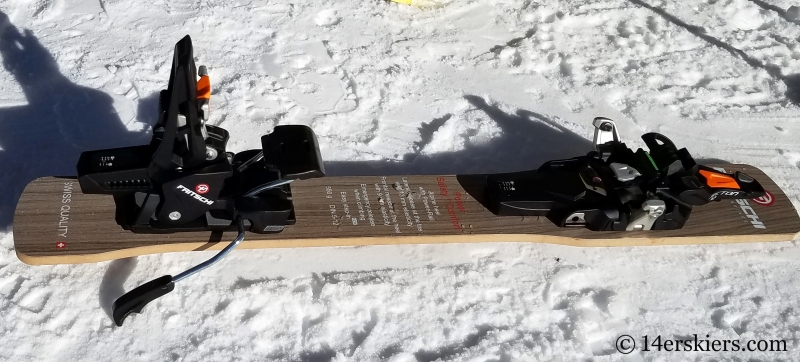
To put the binding into tour mode, you need to pop the heel piece up and then step down to lock the brake into raised position (if you have one). You’ll find additional riser bars to adjust for steeper ascent angles. After touring, simply tuck the risers back into the heel and pop the heel piece back as you would a typical alpine binding to put the binding into ski mode. Since we have not used these bindings in the field, we aren’t certain how difficult these transitions would be without taking skis off. But, they seem easier than a Kingpin with it’s sliding lever system under the foot. I believe both the transition from ski to tour and from tour to ski could be done without having to take the ski off, after some practice. You may need to use the top end of your pole by the grip rather than the basket end to help put the heel into tour mode.
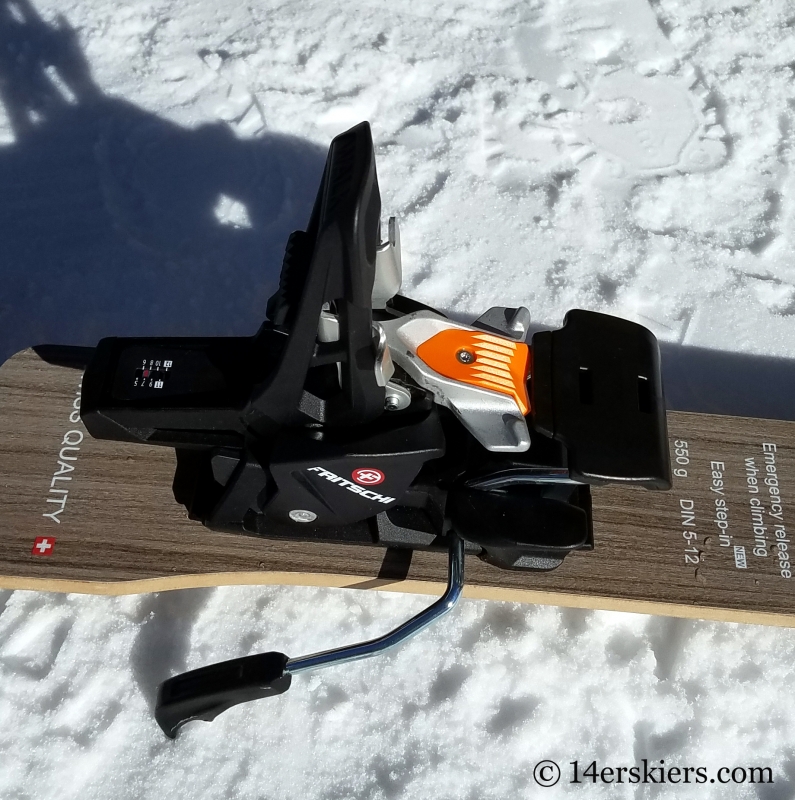
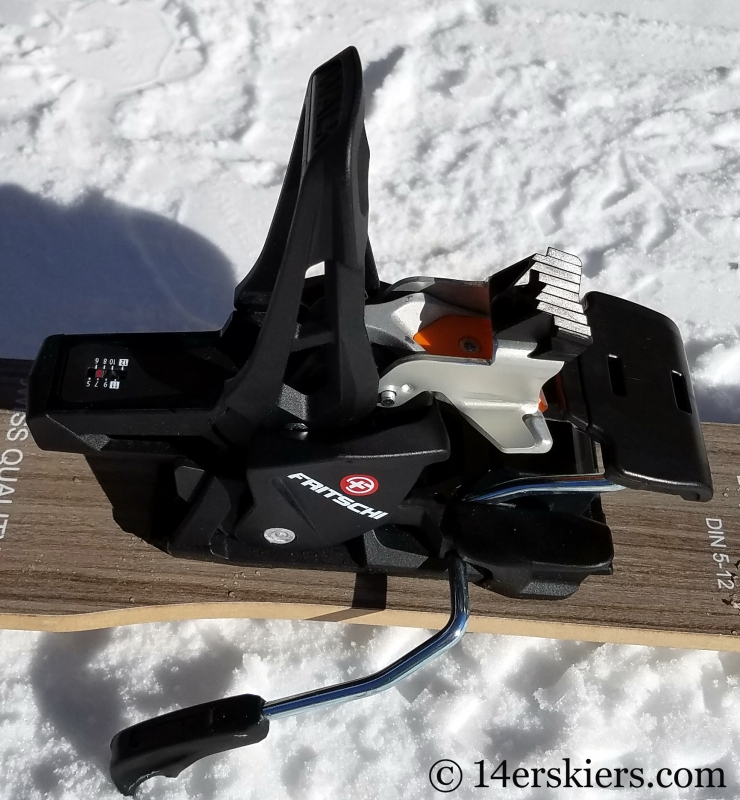
Fritschi has published a great video that helps to demonstrate the features of the Tecton binding:
The Tecton will be available next season and the MSRP is $649.95. Similar to the Evo, this binding is crampon compatible, offers the same brake options as the Vipec, and has DIN release values ranging from 5 to 12. Fashionistas will love that the Tecton has inserts that come in three different color options – orange, yellow, and blue.
The Verdict on the Tecton and Fritchi Evo
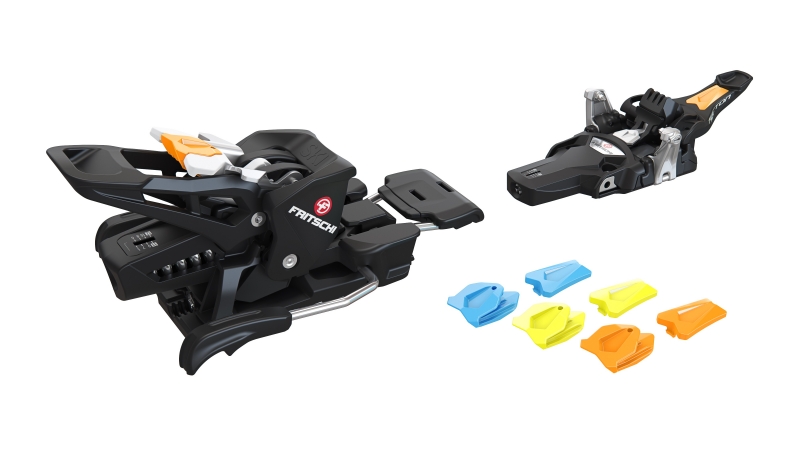
Perhaps the Tecton will be the ultimate “quiver-of-one” binding. At first glace, I love a lot of features about the Tecton. I think that the added power stability associated with the alpine style heel is worth the extra 50 grams of weight when compared to the Evo. Packed with features to improve performance, the Tecton is also full of mechanisms to improve safety. I can’t wait to try these out in the field.
- Mount Buckskin (17 May 2020) - May 28, 2020
- Horseshoe Ski (14 May 2020) – The mountain whose journey nearly killed me - May 27, 2020
- Sayres X-Rated Ski (10 May 2020) - May 19, 2020

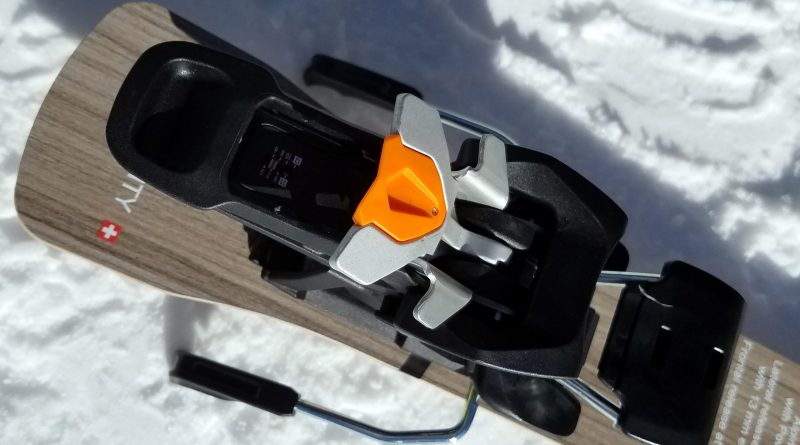
Do you know if the binding is flat when in tour mode? I have the older Dynafit beast which does NOT tour flat. The heel is always elevated and will drive you crazy on the flats. This binding may be the Holy Grail.
Nice Brittany. Can’t say I have a problem transitioning Kingpin with my boots still in binding
Great to know Lee! Would that be true from skiing to touring as well?
Bo, that’s a good question and one I am not 100 % sure about. Let me see if I can find out!
Brittany good point. It’d be impossible transitioning from ski to tour without exiting the Kingpin which is where Vipec is so good
Thanks for the clarification Lee! 🙂
Hi Bo! It’s turns out the Tectons tour flat! Hope that helps!
Thank u for review and comments. Helps me with deciding whether evo or tecton. Tecton wins for me thanks to pushDown heel design and sacrifysing those 100g per pair. Have a nice day